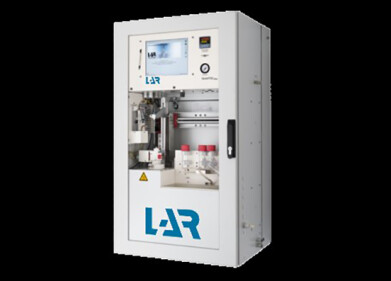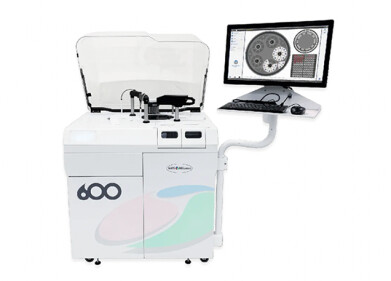Wastewater Analysis
A Complete Guide to Monitoring COVID-19 in Wastewater
Apr 07 2021
Since the discovery of the novel coronavirus COVID-19 in late December 2019, the disease has ravaged global populations and decimated economies, claiming almost three million lives at the time of writing. As a result, the scientific community has been scrambling to find ways to accurately monitor the spread of the virus through a variety of different methods.
Wastewater-based epidemiology has long been used to detect infection levels of poliovirus diseases, since most such ailments affect the respiratory and gastrointestinal tracts. This causes traces of the viruses to be shed from the body via the discharge of faecal matter, where it can persist for a significant amount of time in the natural environment. Scientists have been analysing this wastewater to detect for a wide array of polioviruses for decades, while they have also used such wastewater-based epidemiology to study antimicrobial resistance. More information about these subjects – and how they apply to COVID-19 – can be found in the article Rapid detection of risks to microbial safety of water using BACTcontrol Rapidly detecting faecal pollutions related to microbial infections, recently including COVID-19.
Can COVID-19 survive and be spread via sewage?
Previously published scientific studies have demonstrated that SARS-CoV-2 (which is the virus responsible for the coronavirus pandemic) can indeed survive in wastewater for over three weeks. However, the duration of time that it is capable of remaining active for depends greatly upon the temperature, concentration of suspended solids and organic matter, acidity, property of water and dose of disinfectant used in the solution in which it is contained.
Nonetheless, studies have suggested that COVID-19 traces can not only survive in the stool of sufferers and in the sewage of the wider community, but could possibly be spread this way, too. While more research is required into whether the virus can survive the disinfection processes that are put in place to treat drinking water, it’s extremely concerning that the disease could potentially continue to propagate in this way.
Why is monitoring COVID-19 in wastewater important?
Given that COVID-19 is perhaps capable of both surviving and being spread via sewage, it’s abundantly clear why monitoring wastewater to keep track of infection levels is important. Fundamentally, this knowledge could help the authorities to take the requisite steps to avoid the contaminated wastewater affecting any more people.
However, monitoring COVID-19 in wastewater is a powerful tactic in terms of predicting the spread of the disease, too. That’s because existing epidemiological practices have their own limitations; hospitalisation figures can arrive up to a fortnight after initial infection and only focus on those sufferers who show symptoms, which is also a drawback for individual diagnostic testing, as well. What’s more, the latter technique can be costly, time-consuming and only offer a finite capacity.
Monitoring wastewater, on the other hand, overcomes all of those obstacles. Every single person in a community – regardless of whether they are asymptomatic, mildly symptomatic or in danger of hospitalisation – will submit samples of their own DNA via the sewage system. This allows for a non-discriminatory and non-invasive form of monitoring which, while it does not allow for individual diagnoses, does provide a quick and effective overview of how seriously a community may be suffering from the disease. This allows the authorities to divert resources as and when they are required to contain the spread of the disease before it has spiralled out of control.
Who has been leading the research on monitoring COVID-19 in wastewater?
One of the earliest proponents on wastewater-based epidemiological monitoring of COVID-19 was the KWR Water Research Institute in the Netherlands. However, the UK has since taken a leading role in such investigations, with Professor Lian Lundy from Middlesex University overseeing an international initiative that collaborates to share knowledge and exchange ideas on the subject.
Meanwhile, the National COVID-19 Wastewater Epidemiology Surveillance Programme (N-WESP) was launched in July 2020 with £1 million backing from the Natural Environment Research Council (NERC). It has deployed monitoring systems across the nation and involved scientists from no less than nine academic institutions, including the University of Edinburgh and the London School of Hygiene and Tropical Medicine.
Similar programmes have also been initiated in locations as diverse as Luxembourg, France, Italy, Spain, Sweden, Turkey, Kenya, Nigeria, South Africa, Australia, the United States and many more. These collaborative efforts have been instrumental in deploying monitoring systems at scale and at pace, as well as sharing data and identifying best practices in the industry.
How and from where should samples be collected and stored when monitoring COVID-19 in wastewater?
The UK government has published detailed guidance on best practices with regards to the collection, transport, storage, handling and preparation of samples of COVID-19. This involves the use of all suitable forms of personal protective equipment (PPE) such as face masks, gloves and glasses, as well as thoroughly cleaned and sterilised sample equipment, such as sample buckets, leakproof bottles, ice coolers, tubing and labelling apparatus.
As for where samples should be drawn from, it’s recommended to take samples from a well-mixed part of the stream. Drawing samples from too near the floor of the stream can risk compromising the sample by including too many solids to be representative of the overall stream, while a volume of at least one litre of sample is recommended. Bottles or buckets should not be completely filled so as to avoid freezing issues during storage. Composite samples are preferred in comparison to grab samples.
All samples must be clearly labelled with the site they were taken from, the date and time they were taken, the initials of the sampler, an identification number and any other relevant information. They should be refrigerated (or at least cooled) during transportation, then stored at 4°C and used within two weeks if possible. If not possible, they must be stored ideally at -80°C, but at a very maximum of -20°C. Filtered samples are preferrable; if filtration is undertaken, all sample preparation techniques must be documented.
What techniques are used for the analysis of COVID-19 in wastewater?
Although there are a range of different techniques used to analyse wastewater samples for traces of the virus, they are all molecular tests which share much in common with those used to test individuals. Specifically, they employ a quantitative polymerase chain reaction with a reverse transcriptase step (RT-qPCR), targeting specific genes belonging to COVID-19 to determine its presence. The results are returned in the format of number of RNA copies per litre of sample collected. There are variations on this theme which may be employed by different research institutions, according to their own preferences, though this basic idea has been identified as the fastest, most reliable and accurate laboratory method for COVID-19 wastewater-based epidemiology.
How important has collaboration been in identifying the most efficient and effective workflows for monitoring COVID-19 in sewage?
The aforementioned collaboration has been instrumental in identifying these workflows, since it has allowed individual researchers and their collective teams to try out new methods and learn from their mistakes, thus enhancing the knowledge of the whole through their contributions. It is highly unlikely that the current level of acumen and ability would have been reached in a similar timescale without the use of collaboration between different academic and research centres in countries around the globe.
Can monitoring for COVID-19 be integrated into existing wastewater-based epidemiology workflows?
The next step is to integrate this kind of COVID-19 analysis into existing wastewater-based epidemiology workflows. The good news is that these workflows are already in practice in plenty of countries around the globe, where polioviruses and antibiotic-resistant bacteria are screened from sewage samples on a regular basis. In addition, certain facilities will also detect concentrations of microplastics, medicines, residues, drugs, pesticides, hormones and other artificial components, which can deliver interesting insights about the habits and healthiness of the general population. For those interested in the applications and advantages of wastewater-based epidemiology, the e-learning event The utility of municipal wastewater analysis for drug epidemiology, food safety and environmental monitoring: From targeted analysis of biomarkers to non-target screening has much more information on the subject.
Given that the infrastructure to carry such analysis out is already in place in many locations worldwide, it’s not too much of a departure from that system to include COVID-19 detection in the workflow, as well. In fact, that has already been initiated by several wastewater monitoring companies, including RVIM in the Netherlands and Veolia in France. Recently, the International Water Association (IWA) hosted a webinar on the subject so as to share their expertise and experience with as many interested parties around the world as possible.
Are there any international standards for monitoring COVID-19 in wastewater?
While there are not as yet any official international standards geared towards dealing specifically with COVID-19 in wastewater, those making forays into the area should abide by existing guidance on other forms of wastewater analysis. Of course, sample handling should follow the requisite biosafety standards for dealing with COVID-19, as well. Meanwhile, the aforementioned collaborative study, which is being led by the University of Middlesex, is providing a database of information from which stakeholders can draw to inform their own decisions and practices.
Digital Edition
AET 28.4 Oct/Nov 2024
November 2024
Gas Detection - Go from lagging to leading: why investment in gas detection makes sense Air Monitoring - Swirl and vortex meters will aid green hydrogen production - Beyond the Stack: Emi...
View all digital editions
Events
Jan 12 2025 Abu Dhabi, UAE
Jan 14 2025 Abu Dhabi, UAE
Jan 20 2025 San Diego, CA, USA
Carrefour des Gestions Locales de L'eau
Jan 22 2025 Rennes, France
Safety, Health & Wellbeing LIVE
Jan 22 2025 Manchester, UK



















